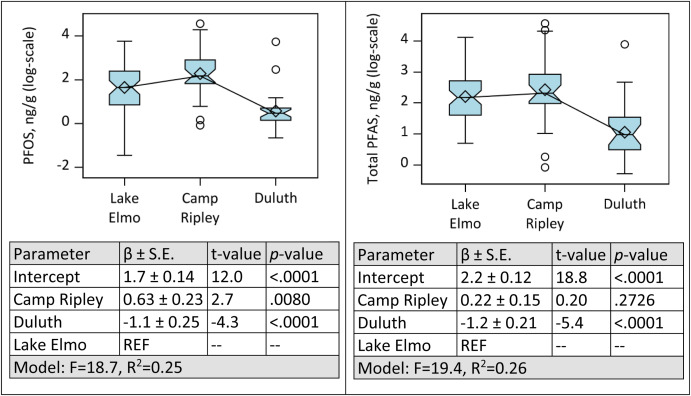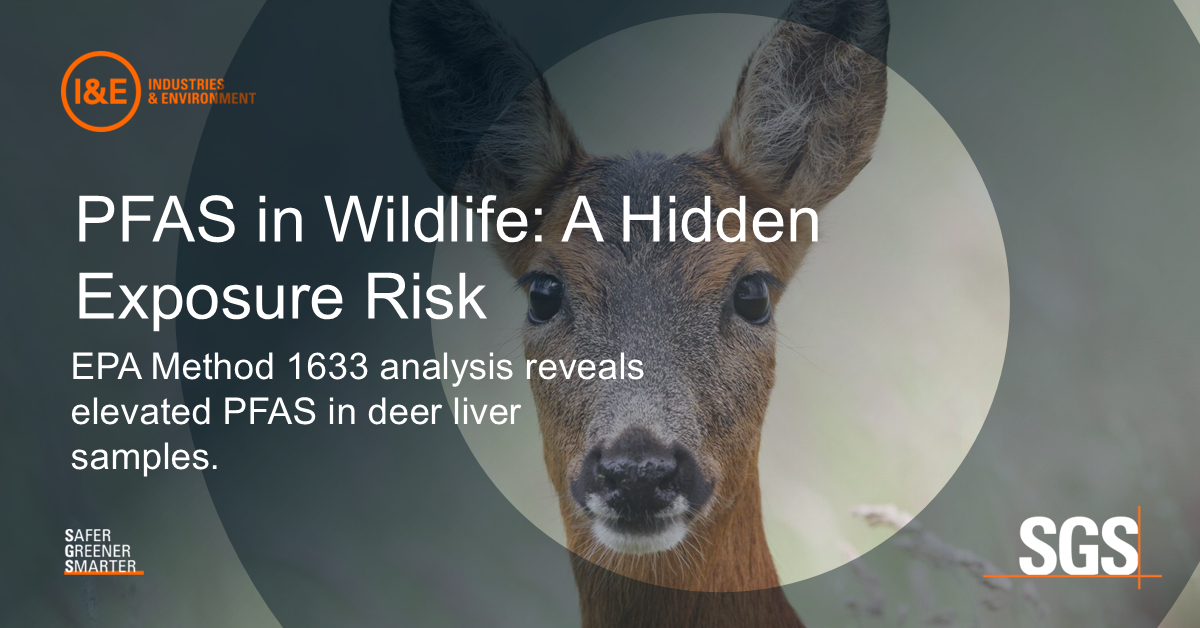PFAS in wildlife occasionally consumed by humans is an overlooked, potentially significant source of PFAS exposure. So, it’s great to see this study (Open Access) by a group of scientists from the government of Minnesota featuring EPA 1633 PFAS tissue measurements by SGS. TLDR: Do not eat the liver.
The study by LaSharr et al. (2025) investigates the presence of PFAS in white-tailed deer harvested near three PFAS-contaminated sites in Minnesota: Lake Elmo, Duluth, and Camp Ripley. PFAS, particularly PFOS, were found in 100% of liver samples and 88% of muscle samples, with liver concentrations being up to two orders of magnitude higher than muscle. The study revealed statistically significant differences in PFAS concentrations across sites and between deer life stage-sex groups, with adult males showing the highest levels. PFAS profiles in deer tissues reflected the known contamination sources at each site—3M waste disposal at Lake Elmo and aqueous film-forming foam (AFFF) usage at Duluth and Camp Ripley.

Our lab played an important role in the study by conducting the PFAS analyses using EPA Method 1633, The use of standard, well validated methods means the data is benchmarked appropriately and can easily be compared with other similar studies.
These findings have implications for public health, especially regarding the consumption of wild game, and suggest that liver tissue may pose a greater risk due to higher PFAS accumulation. PFAS in muscle tissue did not exceed ecological risk thresholds, the liver did 15% of the time, which is not great for the predators eating nutrient rich liver. It also underscores the importance of consistent analytical methodologies for future PFAS monitoring in wildlife. Overall, the study highlights the need for further research and potential consumption advisories, especially regarding deer liver, which may pose ecological and human health risks.

